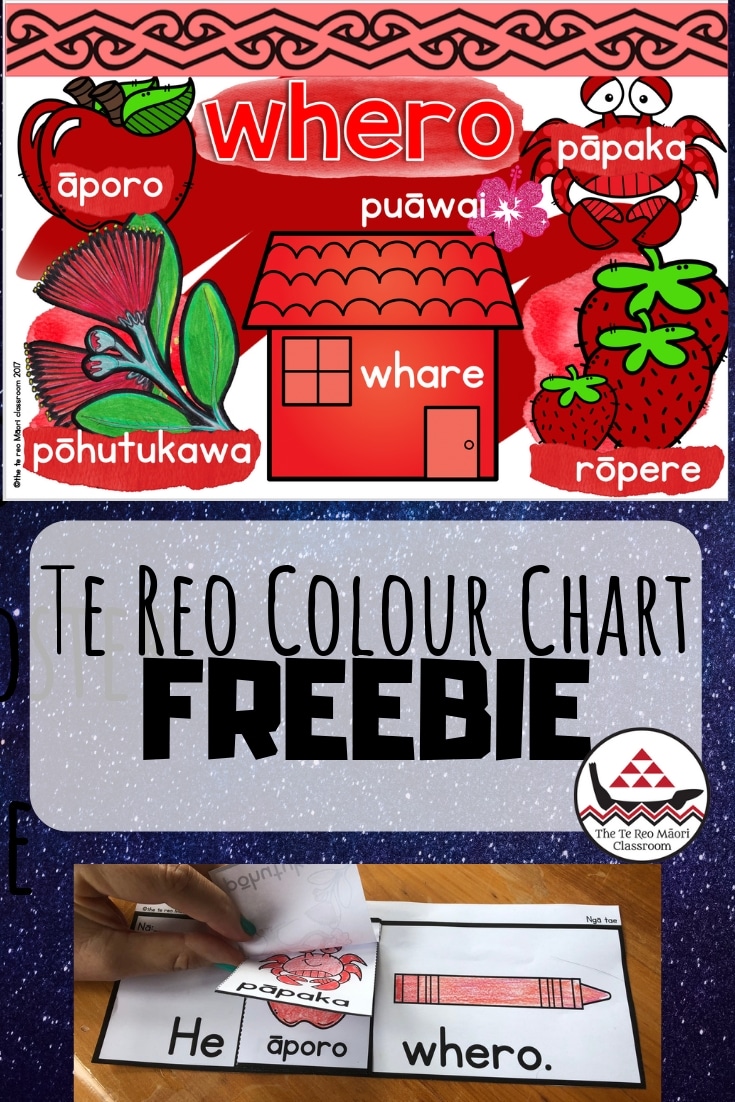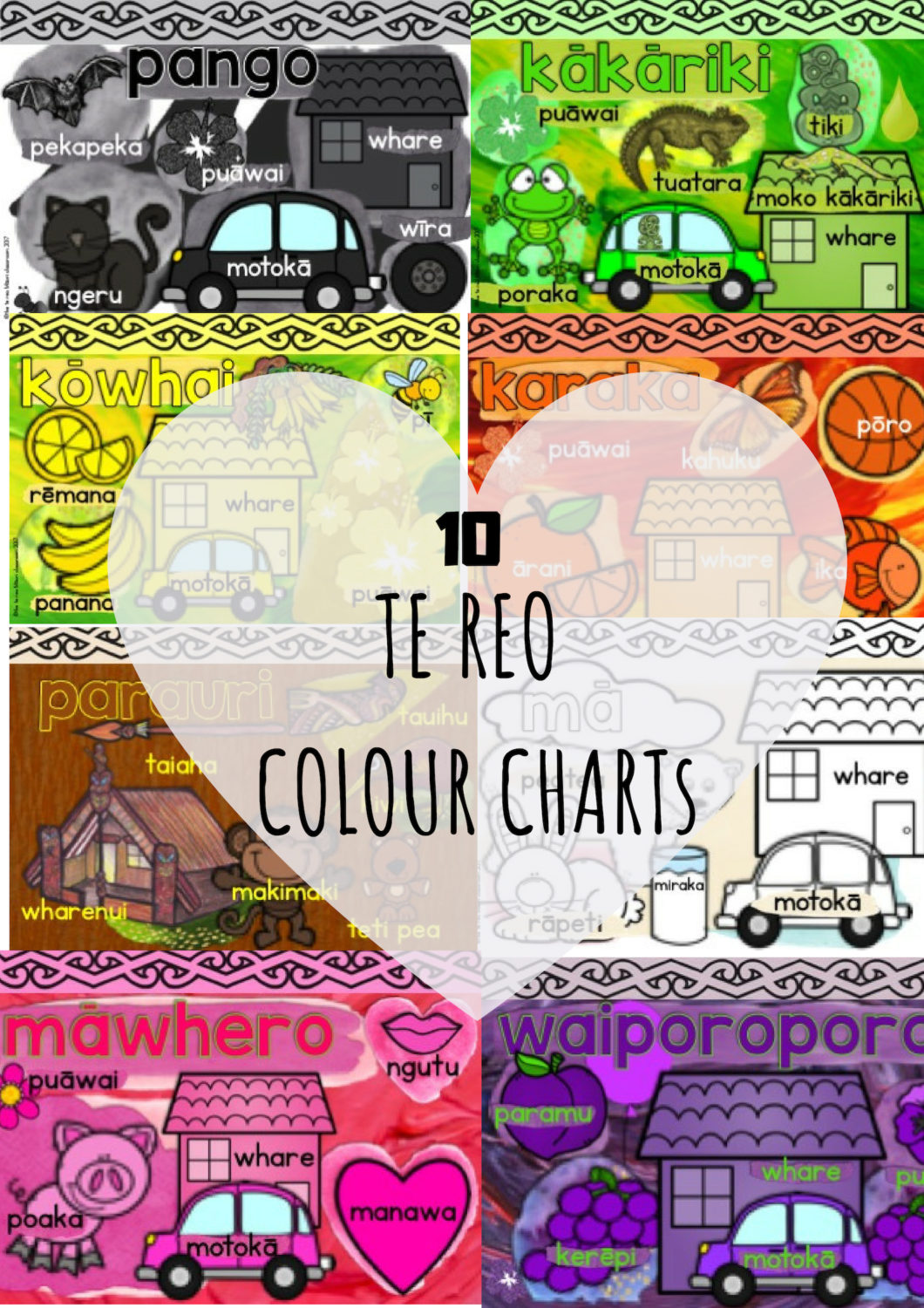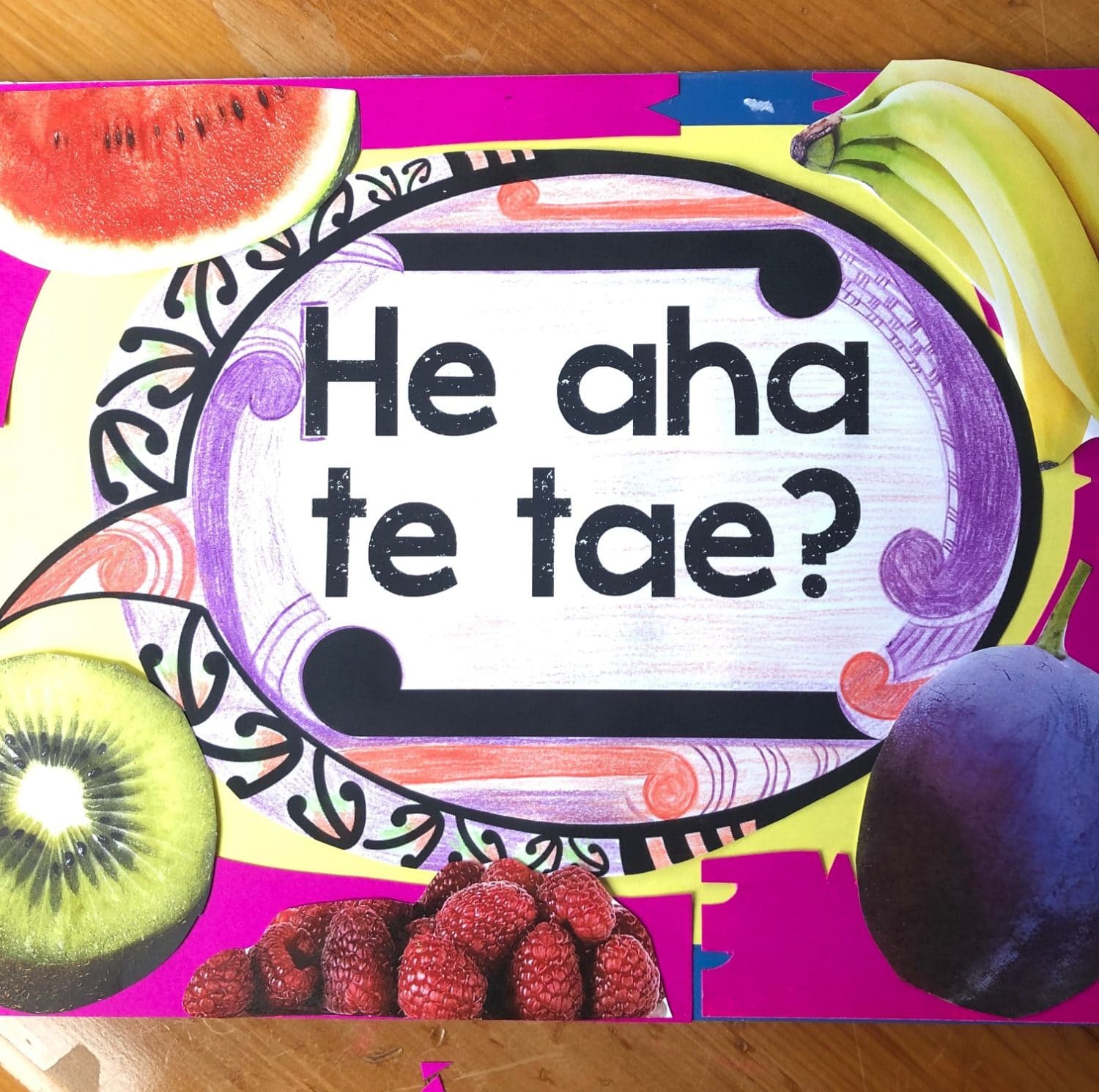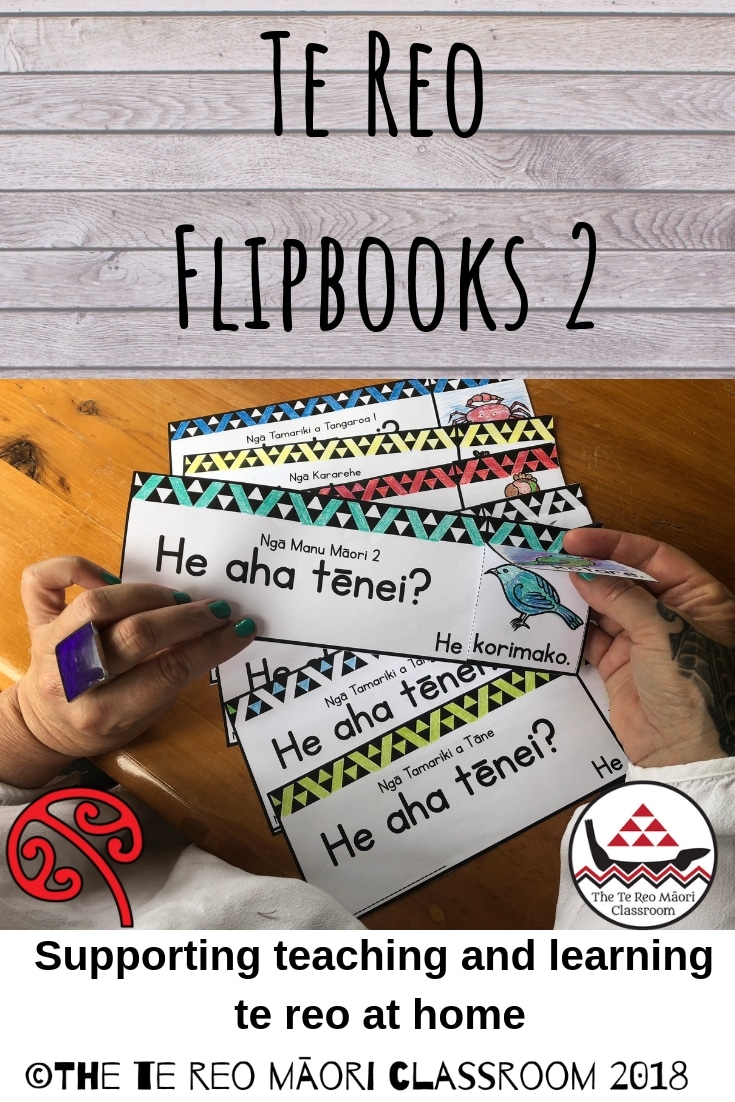This te reo printable freebie, a colour chart, matches the Colour flip book freebie. It can be part of an awesome te reo colour book your tamariki can read over and over again.

I am really excited about being able to help whānau support their tamariki to learn te reo at home. I think if we are going to make significant progress with the speaking of te reo in New Zealand, home is where the big difference will be made.
There is definitely an imbalance on resources for te reo versus English in our mainstream schools. Following that, the expectation from the Ministry of Education is that there should be more te reo taught in schools (and there should be) but there is a disparity in Māori resources and support for both ākonga and kaiako.
One reason I’m excited about sharing my resources for whānau at home is that it’s something I would have liked to have done more of when my tamariki were smaller. I felt all my energy went into teaching tamariki at school and with four under five I definitely didn’t have spare time to make resources. I am inspired by all of you out there, at school and home, “reofying” your kainga, and I hope I can help you.
Here is the te reo pintable freebie.
nbsp;
Watch this ifor an interesting insight on babies and language acquisition.
Te Reo at Home Resources
Numeracy and Literacy resources are what you can expect from us, with some neat activities. I have masses of tried and true activities for second language acquisition.
This colour te reo freebie printable is part of a bigger colour poster resource which is great made into a book. There are 10 colours which match the Colour Flip books.
Here is the freebie Whero Colour Chart.Fill in the form below.

If you haven’t got the Colour Flip Book Freebie which matches the Colour poster do so here.
From these you can make awesome scrapbooks with your tamariki to read and refer to. I have still got books I made with my daughter from 18 years ago!
Print saturation in te reo is what will help you learn. In our communities it is basically English we see everywhere. If your tamariki can see more Māori language in written form they get to see the word shapes.
Te Reo Colour Scrapbook
This is how to make your scrapbook.

1.Colour in the speech bubble. This is the cover.

2. Place another coloured piece on top of the scrapbook. Cut and glue your speech bubble.
3. Fill the edges with other scraps of paper if you don’t like seeing the scrapbook cover. You can also use wrapping paper.

4. Choose some other magazine pictures. Decorate. Glue. Kua mutu! Cover finished.
This would be a PERFECT holiday project as a break from the sun and screen time. It will also keep the kōrero and learning going. Once you have started the book you can take the opportunity to draw, cut paste or write in it. You could have guest posts in the book where friends could write sentences about colours or draw pictures. Photos would be cool too!
Here are 10 more Colour Charts available for purchase.
If you haven’t heard of QR codes they are an awesome easy to use app for a phone or iPad.
A google search will bring up lots of good information. Here’s Lynette’s post on QR codes.
Te Reo Grammar
In conclusion, these sentences are called classification sentences, or “he” sentences. They describe what someone or something is, or what qualities they have. They answer the questions “What is?” and “What are?”
These sentences consist of two noun phrases:
he + information phrase + subject phrase
This is the first (information) phrase
- He + noun
- He + noun + adjective
- He + adjective
You can see it’s not just about learning the colours, it’s putting colours in a context and placing them in a sentence with or without a noun.
Te Reo- How Do You Know What You Are Supposed To Learn/Teach?
There will be a variety of language modes included in the activities which are important in any balanced learning programme. All of the activities are based on the
Te Aho Arataki Marau mō te Ako i Te Reo Māori – Kura Auraki
Curriculum Guidelines for Teaching and Learning Te Reo Māori in English-medium Schools: Years 1-13.
If you look at the curriculum it might surprise you to see that there is no achievement objective for learning colours. This comes under
2.5 communicate about physical characteristics, personality, and feelings (just as animals or body parts could). Kaiako-you can see from this example that NO you don’t have to start from Level one and work up to level two.
Te Reo Flip Books 2
These te reo printables are such a quick way to get your tamariki reading. Like all early readers they have a repetitive phrase or “formulaic” expression. Most of us learnt to read this way. It seemed like rote, and probably was until we learnt word recognition.Te Reo or any other language is exactly the same.
He aha tēnei? What’s this? Such a simple phrase. We use it so often. And especially our tamariki. All day, everyday! There’s even a waiata written about it! He aha tēnei. I love this Sharon Holt book, waiata AND this gorgeous rangatahi with his kōrero ā rotarota (sign language).
These flip books are a real hit. I’ve used this whakataukī to sum them up.
“Ahakoa he iti he pounamu”-Although small, it’s precious. They really are! One page-heaps of learning.
- Hand and eye coordination for the colouring , cutting, gluing and turning pages
- Repetition of key phrase-He aha tēnei?
- 5 nouns to learn
Furthermore this is x 10 as there are ten books. If you would like to add to your flip book collection these are available here.

If you want to learn a language…
Repetition is KEY and king!
For instance, you could find an opportunity to repeat karakia while feeding your kurī!

